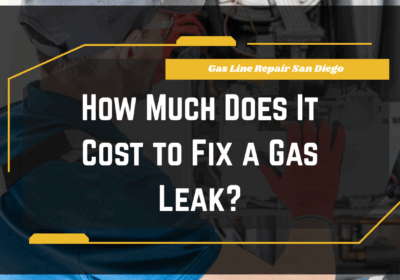Slab Leak Repair: Comprehensive Guide to Detection, Costs, Prevention, and More

Hey homeowners! So, you’re dealing with a slab leak, or maybe you just want to be prepared for the worst-case scenario? Smart move. Slab leaks can be sneaky, expensive, and downright messy if not handled properly. In this guide, we’ll break down everything you need to know—from identifying signs of a slab leak to the different repair options available and even some tips on prevention. Let’s dive in!
Understanding Slab Leaks
What Causes Slab Leaks?
Slab leaks occur when water pipes running beneath your home’s foundation spring a leak. Common causes include soil movement, which can expand or contract depending on moisture levels. Poor construction practices, pipe corrosion, and even tree roots can wreak havoc on those hidden pipes. It’s like a perfect storm underneath your house.
How Do Slab Leaks Impact Your Home and Health?
Let’s be honest: slab leaks are more than just a plumbing issue. If left unchecked, they can create some serious structural damage to your foundation—we’re talking cracks, shifted slabs, the works. Plus, mold growth is a major concern, and no one wants to risk their health with poor indoor air quality. Oh, and did I mention property value? Slab leaks left unattended can lead to major depreciation.
Recognizing the Signs of a Slab Leak Early
Early Warning Signs to Look Out For
Wondering how to spot a slab leak? Here’s what to look for: unexplained spikes in your water bill, damp or warm spots on the floor, and the ominous sound of water running when no one’s using it. If you’re seeing cracks in walls or your flooring, it’s time to get suspicious.
Potential Consequences of Ignoring a Slab Leak
Ignoring these signs can lead to a whole list of unpleasant outcomes—think cracked foundations, permanent damage to flooring, and the costs of extensive repair skyrocketing. Acting early can save you from financial headaches.
Professional vs. DIY: Is Slab Leak Repair a DIY Job?
What Homeowners Can Do Before Calling a Professional
If you’re a DIY enthusiast, there are a few things you can check before dialing up a plumber. You could start by turning off all the water and seeing if your water meter still runs. Also, using food coloring to check for any toilet leaks can sometimes reveal an underlying issue—these are low-risk tasks that can help you figure out if you’re dealing with a slab leak.
When to Call a Professional Plumber
That said, slab leak repairs are not your average DIY weekend project. They’re tricky and need specialized equipment, like electronic listening devices. A pro can tackle this efficiently and safely, avoiding more expensive damage down the line.
Slab Leak Detection Methods
Traditional vs. Modern Detection Techniques
Back in the day, finding a slab leak involved a lot of guessing and jackhammering. But now, pros use cool tools like electronic listening devices and thermal imaging cameras to pinpoint the leak’s location without tearing up your home. Pressure testing is also a handy way to tell if you’ve got a problem.
How Professionals Find Hidden Leaks Without Digging
The technology today is non-invasive, meaning they’ll know exactly where to dig before making a mess—which is a huge bonus if you like your floors intact.
Repairing a Slab Leak: Exploring Your Options
Different Repair Techniques Explained
- Trenchless Slab Leak Repair (Epoxy Lining) This is a minimally invasive option where they insert an epoxy liner to seal the leaking pipe. It’s great for small, contained leaks.
- Pipe Rerouting or Repiping Sometimes, rerouting pipes is the best solution, especially if multiple leaks are present. It bypasses the trouble spots entirely.
- Tunneling Under the Slab If preserving your flooring is crucial, professionals may tunnel under your home to access and fix the damaged pipe.
- Jackhammering Through the Slab When other methods aren’t feasible, they may need to break through the slab. It’s disruptive but effective.
Cost Breakdown: What Affects the Price of Slab Leak Repairs?
Costs vary based on labor, accessibility, and the repair method used. The range can be anywhere from a few hundred to several thousand dollars, so it’s worth getting a few quotes.
Slab Leak Repair and Home Insurance
Are Slab Leaks Covered by Insurance?
You’re probably wondering if insurance has your back. Typically, if a slab leak is due to sudden damage, like a burst pipe, you’re covered. But slow leaks caused by wear and tear might not be, so it’s crucial to know your policy.
How to File an Insurance Claim for Slab Leak Repairs
Documentation is key. Take photos, get detailed invoices, and keep communication open with your insurer. The more prepared you are, the smoother the claim process will be.
Preventing Slab Leaks: Tips to Keep Your Foundation Safe
Preventive Maintenance for Plumbing Systems
Schedule annual plumbing inspections to catch potential problems early. A little prevention can go a long way.
Landscaping Tips to Prevent Damage
Avoid planting large trees near your foundation, as their roots can mess with your pipes. Also, make sure drainage around your home is optimal.
Soil Moisture Control
Maintaining consistent moisture levels around the foundation will help avoid those pesky soil shifts that put pressure on pipes.
Comparing Repair Methods: Which is Best for Your Situation?
Pros and Cons Table of Different Repair Options
Include a table that breaks down the pros and cons of trenchless repair, repiping, tunneling, and jackhammering. Quick and easy comparisons are your friend when making a big decision.
Factors to Consider When Choosing a Repair Method
Things like severity, budget, and the accessibility of the pipe are important considerations to make before you start.
Real-Life Slab Leak Repair Case Studies
Success Stories from Homeowners
Share stories of homeowners who successfully repaired slab leaks. Discuss what methods they used, what challenges they faced, and how it all worked out in the end.
Lessons Learned from Common Mistakes
Talk about the mistakes some people made by attempting DIY repairs or ignoring warning signs. There’s value in learning from other people’s errors.
FAQs on Slab Leak Repair
How Long Does It Take to Repair a Slab Leak?
Usually, it takes a day or two, depending on the method.
How Much Damage Can a Slab Leak Cause?
A lot. It can compromise your foundation, ruin flooring, and promote mold growth.
Can I Stay at Home During the Repair Process?
Yes, for some methods like trenchless repairs. But for jackhammering through the slab? You might want to find another place for a couple of days.
Conclusion
Alright, folks, that’s the lowdown on slab leak repair. The key is early detection and understanding your options—whether it’s trenchless repair or repiping. Don’t forget to keep up with preventative maintenance and always know your insurance policy inside and out. And if you’re seeing any of those early warning signs, don’t hesitate to call in the pros. Until next time, stay dry and leak-free!
Think you might have a slab leak? HomePro Plumbing and Drains has got your back. Our expert team uses state-of-the-art technology to detect and repair slab leaks quickly and efficiently, saving you money and hassle. Don’t wait for that small leak to become a big problem—contact HomePro today to schedule your professional inspection. And hey, if this guide was helpful, share it to help your friends and neighbors stay ahead of the leaks too!
Related Posts

Leaking Pipe San Diego: 7 Expert Steps to Find and Fix the Source Fast
Leaking Pipe San Diego If you've discovered a leaking pipe San Diego, you're not alone.…

Gas Line Repair San Diego: How Much Does It Cost to Fix a Gas Leak?
Gas line repair San Diego is a critical service that homeowners should never ignore. If…
